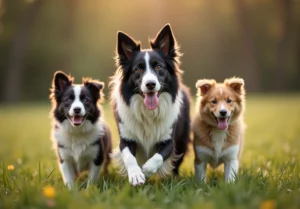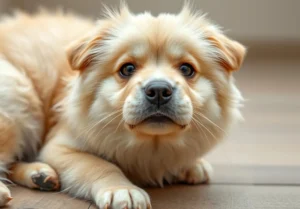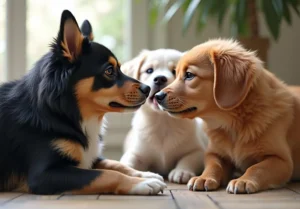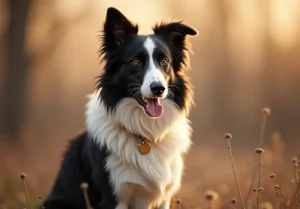Cats are fascinating creatures with many unique traits, one of which is their pointy tails. Have you ever wondered why cats tails are pointy?
Cats Tails and Their Purpose:
Evolutionary Traits
Cats’ tails are more than just a cute accessory – they serve a vital evolutionary purpose. The pointy shape of a cat’s tail has evolved over time to aid in balance and agility. Think of it like a tightrope walker’s pole, providing stability and precision in movement. This adaptation allows cats to navigate tricky terrain with grace and skill, whether they’re prowling through the jungle or leaping onto a windowsill.
Additionally, the shape of a cat’s tail can also be a helpful indicator of their mood. When a cat’s tail is held high and puffed out, it usually means they are feeling confident and content. On the other hand, a tucked tail may signal fear or aggression. By understanding the evolution of their tails, we can gain deeper insight into our feline friends’ behavior and needs.
Communication Tool
Aside from helping cats maintain their balance, their tails are also versatile tools for communication. When a cat approaches you with their tail curled in a question mark shape, they’re likely asking for attention or affection. On the flip side, a fluffed up tail can indicate that they’re feeling threatened or defensive.
In the wild, cats use their tails to signal to other animals, coordinating hunts or warning of potential dangers. It’s their way of saying “I’ve got your back” or “Watch out, something’s not right.” By paying attention to these subtle cues, we can better interpret what our own cats are trying to tell us.
And here’s a pro tip: If you notice your cat’s tail vibrating rapidly while they’re near you, chances are they’re feeling extra happy and content. It’s like a little feline celebration!
Balance and Agility
A cat’s tail is not just a cute accessory – it plays a crucial role in their balance and agility. Imagine your feline friend gracefully maneuvering through narrow spaces or effortlessly leaping from one surface to another. Their tail acts as a counterbalance, helping them make those death-defying moves look like a walk in the park. So, next time you see your cat prancing around like a skilled acrobat, give their tail a little nod of appreciation – it’s their secret weapon!
Hunting and Prey
When it comes to hunting and prey, a cat’s tail is a valuable tool in their arsenal. Its pointy shape isn’t just for show – it serves a practical purpose. Picture a cat stalking its prey, moving stealthily with their tail held high in a slight curve. This distinctive shape helps them stay balanced while tracking their target, ensuring they can pounce with precision and speed. So, the next time your cat brings you a “gift” from their outdoor adventures, remember to thank their trusty tail for aiding them in the hunt.
Additional Insight: To further enhance their hunting prowess, a cat’s tail also serves as a visual cue for communication. By twitching, puffing, or flicking their tail, cats can convey messages to their prey, fellow cats, or even humans. It’s like their own silent language that adds another dimension to their already impressive hunting skills.
Temperature Regulation
A cat’s tail serves as a handy tool for regulating body temperature in various environments. When it’s cold, a cat will fluff up its tail to create a layer of insulation, trapping heat close to its body and keeping warm. Conversely, when it’s hot, a cat will hold its tail straight out to help dissipate heat, acting like a natural fan to cool down. This adaptive feature allows cats to maintain a comfortable body temperature regardless of the weather conditions they encounter.
Health and Behavior
The shape and size of a cat’s tail can offer valuable insights into their overall health and behavior. A bushy tail that is twitching or lashing aggressively might indicate that the cat is feeling stressed or threatened, while a puffed-up tail could signal fear or anxiety. On the other hand, a relaxed and loosely curved tail typically indicates that the cat is feeling calm and content.
Additionally, a thin or limp tail could be a sign of underlying health issues or dehydration, prompting a vet visit to ensure the cat’s well-being. By paying attention to your cat’s tail movements and appearance, you can better understand their emotions and keep an eye on their health status to provide the care they need.
- Keep an eye on your cat’s tail: Their tail can be a helpful indicator of their emotional state and overall health.
- Note any changes in tail appearance or behavior: Sudden alterations could signify underlying issues that require attention.
- Regular vet check-ups are crucial: Ensure your cat’s tail health is being monitored as part of their overall well-being maintenance.
Fun Facts About Cat Tails
Cat tails are not just fluffy accessories for our feline friends. They play a crucial role in their balance and communication. Here are some fun facts you may not know about cat tails:
- Communication Tool: Cats use their tails to communicate their mood. A tail held high indicates happiness, while a tail twitching rapidly may signal irritation.
- Balance Buddy: The tail acts as a counterbalance when a cat is walking on narrow surfaces or making quick turns. It helps them stay graceful and agile.
- Temperature Regulator: Cat tails are also used to regulate body temperature. When a cat is cold, it will wrap its tail around its body to conserve heat.
Remember, a cat’s tail is an essential part of their body, so always handle it with care and respect their boundaries.
How to Care for Your Cat’s Tail
Taking care of your cat’s tail is just as important as looking after the rest of their body. Here are some tips to ensure your feline friend’s tail stays healthy and happy:
- Regular Grooming: Brush your cat’s tail gently to remove any tangles or debris. This will prevent matting and keep their tail looking clean.
- Watch for Injuries: Keep an eye on your cat’s tail for any signs of injury, such as cuts or swelling. If you notice anything unusual, consult your veterinarian.
- Provide Enrichment: Cats need mental and physical stimulation to keep them happy. Invest in toys that encourage your cat to use their tail, such as wand toys or feather teasers.
By following these tips, you can ensure that your cat’s tail remains a vital and healthy part of their well-being.
Alex, a passionate animal lover, has experience in training and understanding animal behavior. As a proud pet parent to two dogs and three cats, he founded AnimalReport.net to share insights from animal experts and expand his knowledge of the animal kingdom.




